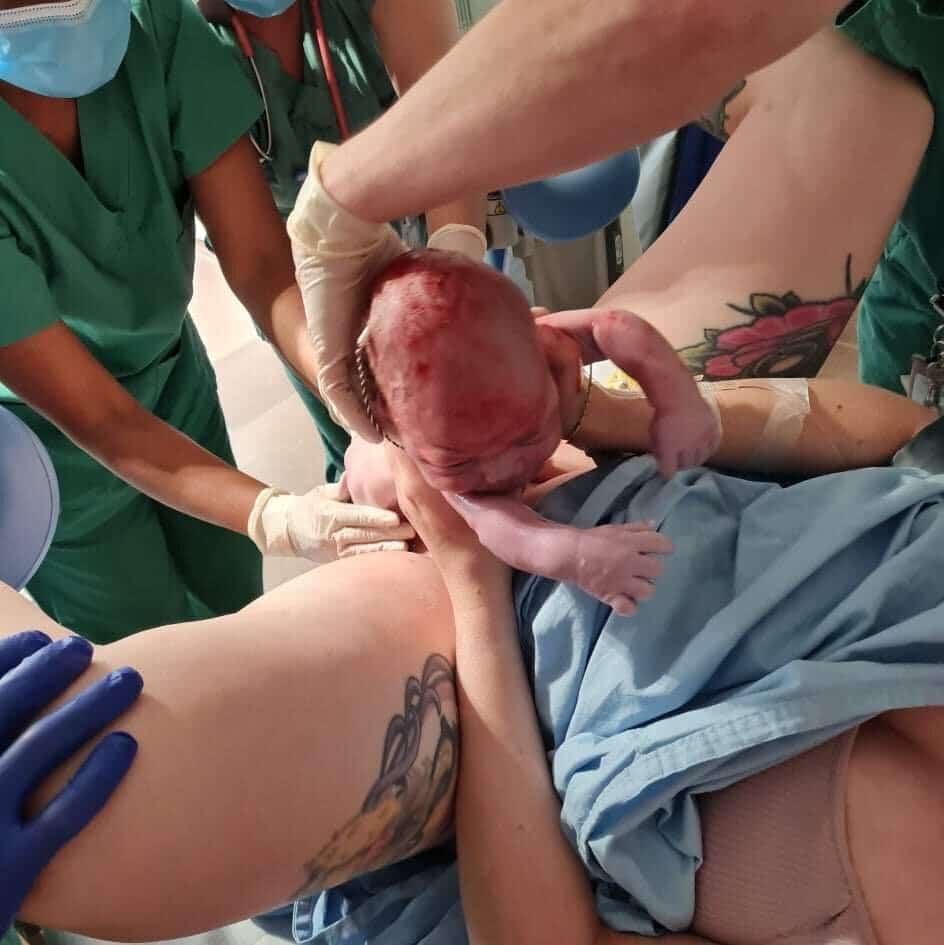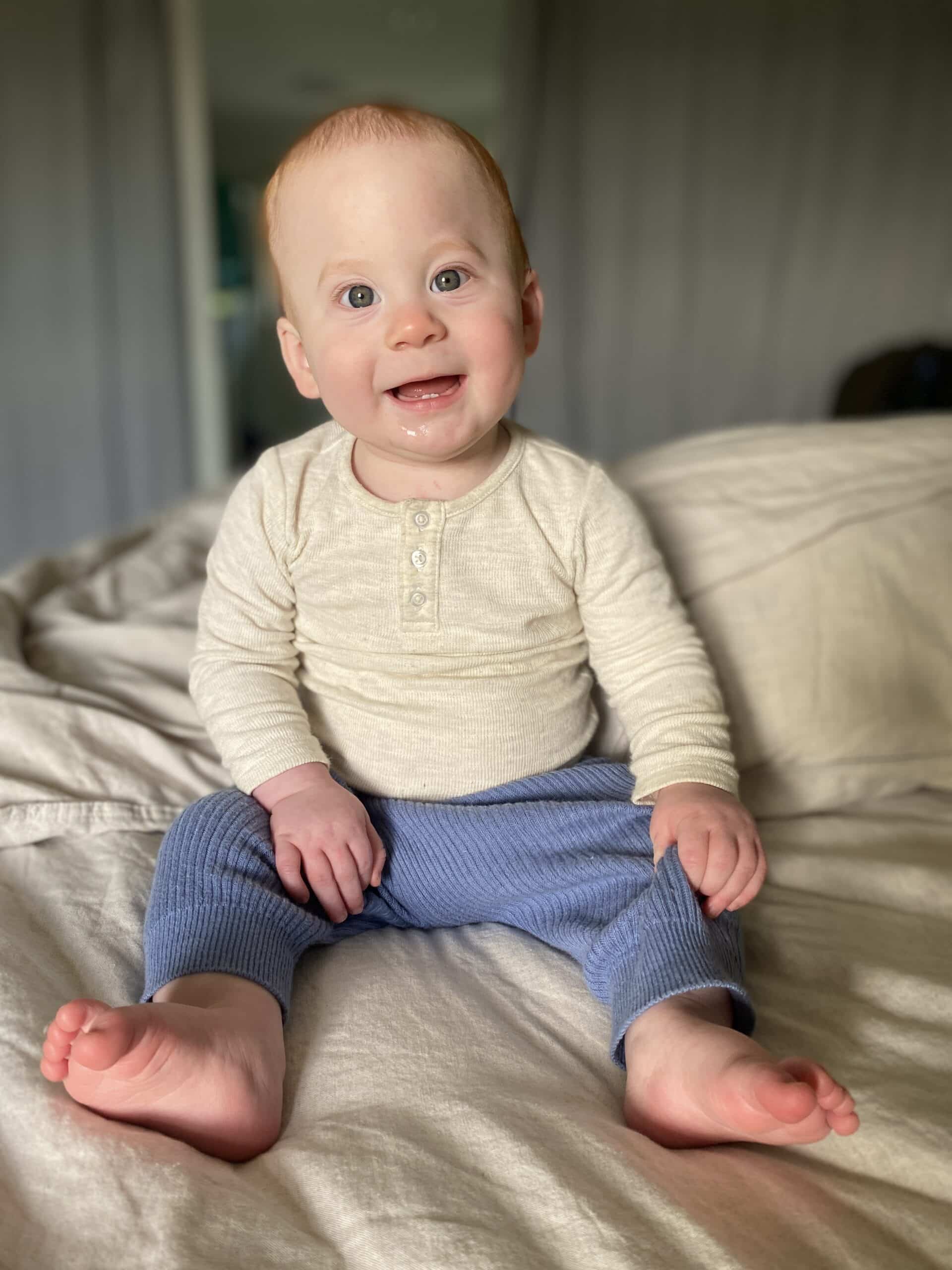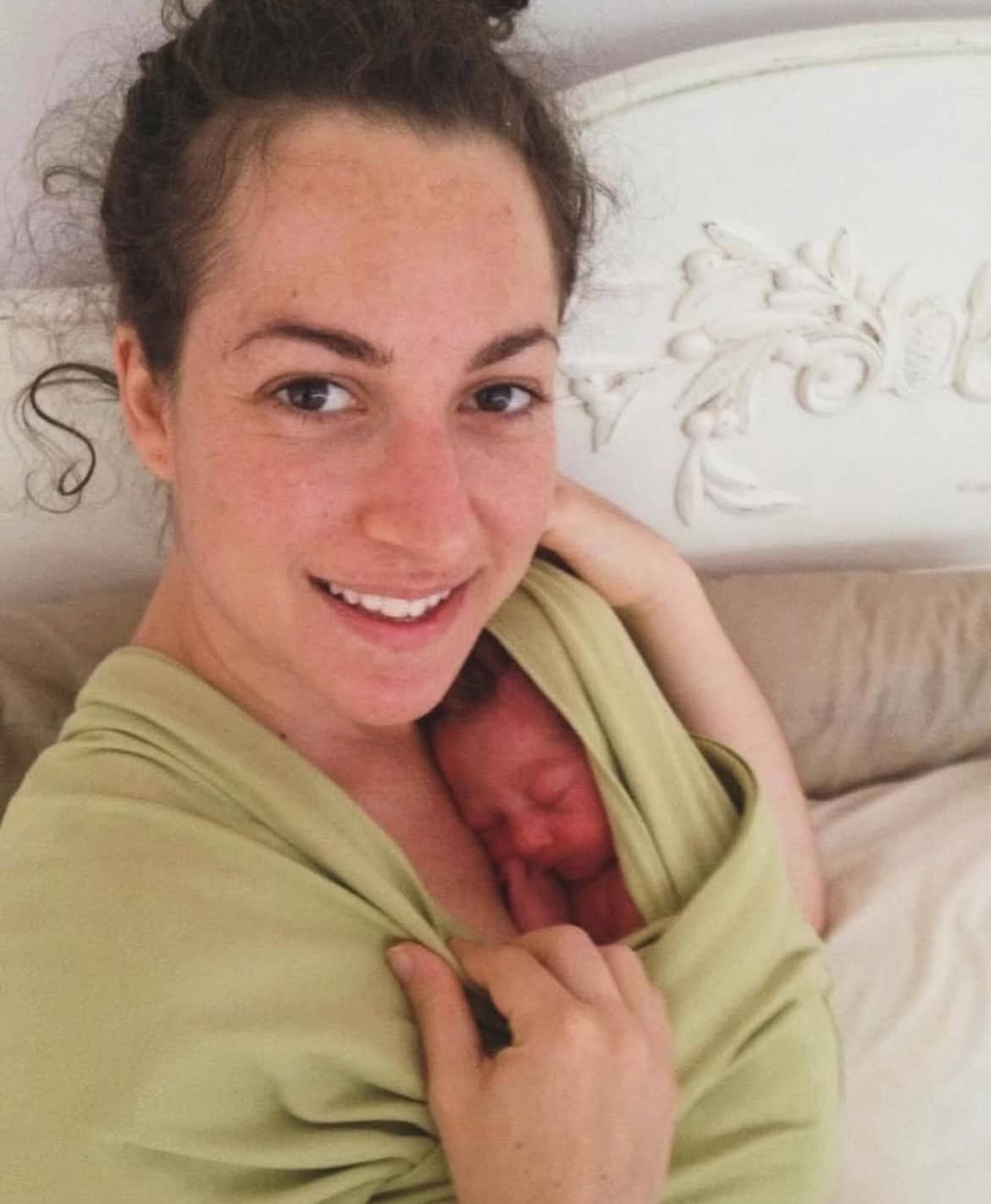Podcasts Meg
EPISODE 261
Meg

“I have a long history with chronic pelvic pain and vaginismus which is the involuntary spasm or tension of the vaginal muscles which makes it either impossible or very painful to experience any kind of penetration. Obviously this makes conceiving difficult. I was 16 when I was diagnosed as I couldn’t use a tampon and I was in a relationship where penetration continued to be excruciating, no matter how many times we tried. A women’s health professional was quick to refer me to a gynaecologist who explained to me that it is related to mind-body connection, hence some women develop it as a result of trauma.”
Meg was given a hymenectomy in her late teens; a simple surgical procedure to break the hymen in the hope that it would help relieve tension but it didn’t change her symptoms at all. She explains it as a pelvic floor that’s in a constant state of tension which can, at times, lead to incontinence.
“I’ve been using dilators since 2016 with varying degrees of success. Because it’s so closely dictated by the mind-body connection, my success is so dependent on where I’m at mentally and if I’m stressed or tense about anything that’s going on in my life, it can make it incredibly difficult. My menstrual cycle and vaginal mucous also changes things for me and there have been many times when I wouldn’t get far at all with the dilators and I’d feel so defeated. But then other times I could make my way through the different dilators in one session. Despite minimal opportunities for penetration, Steve and I have always had a really healthy sex life.”
When it came time to conceive, Meg admits she knew nothing so she started doing some online research. She discovered two techniques that women with vaginismus use to conceive; the splash method; where the partner ejaculates in the entry of the vagina and home insemination which is common for same-sex couples trying to conceive with donors outside of the IVF system.
“I formulated a plan and pitched it to Steve and he was a good sport about it. We did try the splash method the first time which was unsuccessful and the following month we home inseminated every second day but didn’t have any luck. The month after that we continued with home insemination and surprisingly, we fell pregnant.”
Meg’s hCG levels were low and a scan at 8 weeks showed a heartbeat but her baby was measuring at 5 weeks. She also had to have an internal scan with a probe which was significantly uncomfortable although she says the sonographer was incredibly respectful and patient. Miscarrying wasn’t a straight process for her; the GP referred her to the hospital and the hospital needed to get two doctors to induce the miscarriage because her body hadn’t started miscarrying.
“We opted to do the misoprostol induction which are tablets that start your uterus contracting. I was hospitalized for it but I’ve had friends who did it at home. We had a beautiful midwife taking care of us and she’d had six miscarriages herself. She encouraged us to recognise the baby as our baby, not a 10 week fetus. She told us she was sorry, she told us that we were allowed to grieve, she invited us to name the baby which we did. I walked away feeling as though I birthed our baby and it was as beautiful as it could be in what was a heartbreaking situation.”
Meg’s cycles were erratic following her miscarriage but she was determined to conceive again and before long, she did. She felt terrified and vulnerable in her early pregnancy and she carried that throughout her pregnancy although she admits to feeling some relief once she had had her 20 week scan. Meg and Steve also navigated a potential klinefelter syndrome diagnosis which was picked up on her 10 week Harmony Test. They chose not to go ahead with further genetic testing and carried a level of stress and concern throughout the pregnancy. They discovered at birth that baby Fox didn’t have it.
After missing out on the Midwifery Group Practice at her local hospital, she opted for shared care with her GP but didn’t have an appointment at the hospital till 36 weeks. She spent that whole time presuming she would need a caesarean birth as she could imagine how she could birth her baby vaginally. Thankfully, the first obstetrician she met explain that something coming out is very different to something going in.
“It was a new and exciting opportunity because I fully believed I needed to have a caesarean.
From 35 weeks onwards I started experiencing reduced foetal movements. At 36 weeks I had headaches and dizziness and I didn’t have any of the markers for preeclampsia so they sent me for a scan to make sure that everything was travelling ok. It was picked up that he was quite small and he had restricted blood flow through the umbilical cord although this wasn’t read by the hospital staff until I presented to the hospital with reduced foetal movements again at 37+5 weeks.
“I was induced that night and they put the foley catheter in which was very painful; I needed gas for that. I had it overnight and it worked; I went from having a closed cervix to 3cm. The induction process was never presented to me as an option…we went straight to the syntocinon and an hour after it started I got period-like cramps. I was undone by how intense it was. I was starting to get upset because it was so painful and I asked whether or not I could have an epidural at some stage and the midwife told me I’d need to decide early on as there’s often a wait. In hindsight I wish I had gotten up and used movement. I really felt nervous about birthing my baby and I was very scared about having an episiotomy. Any kind of intervention down there made me really anxious.
“The epidural didn’t really work; I wasn’t able to move but it didn’t provide me with any relief for quite some time. By the time I was 10cm the pain was mostly gone but I could still feel the contractions. I ended up pushing for three and a half hours and it was getting to the point where they were considering other options; they said they would have to do a vacuum and to do that they’d have to do an episiotomy. I got really upset then but I’m a very visual person so I asked them not to tell me when they were doing it because I knew it would freak me out. The vacuum popped off his head and they had to get him out quickly and they used the forceps with a lot of force. He was really quiet, he had a big red mark on his head from the vacuum, he had scratches on his face. I wasn’t present, I couldn’t catch up with what was happening.
“I hadn’t prepared for birth and educated myself so there was intervention every step of the way, even after birth as the obstetrician was checking Fox and the midwives were trying to attach him to my breast…everything felt like an intervention. They were just getting their job
done and no one was unkind but because I hadn’t asserted any preferences they were just doing everything that needed to be done and it just felt like a flurry of things happening outside of my control.”
Meg stayed in hospital for five days as baby Fox was very sleepy as he sustained head trauma and he wasn’t feeding because of exhaustion and a tongue tie. Upon returning home, the community nurses treated Meg’s breastfeeding as futile as Fox wasn’t gaining weight. After meeting with a renowned lactation consultant, Meg felt positive about her experience and was comforted that Fox was still getting the benefits of breastmilk after having formula for calorie intake. She continued feeding till he weaned at 13 months.
“We were vocally a one-and-done family. Which is hilarious now. The struggles that we had; miscarriage, kleinfelters, traumatic birth experience…we were really scared and our way to negate any deeper feelings was to say that we were done. But when Fox turned two we started considering another baby and that led into the conversation about conception. We decided to give conventional conception a go and we only tried once in my fertile window and we fell pregnant.
“I had taken a leave of absence from work and I just hit the ground running with the pregnancy; I went to the gym and lived my life and I had this feeling that everything was going to be ok. I really wanted to go through a different model of care; I didn’t get continuity of care but I just went through the midwifery clinic. I definitely like it better than GP shared-care….I felt the care was more centred on myself and the baby.
“I was excited to give birth again; even though it didn’t go as I’d hoped the first time, I still proved that I could do it and I really believed that it was going to be a good experience – both the birth and my breastfeeding experience.
“From 36 weeks onwards I was getting pressure to book in for an induction because they said they wouldn’t let me go past 41 weeks and I really struggled with the language surrounding that. I knew that making that appointment would psychologically feel like time pressure. At 39+6 I had a phone appointment because I had a sinus infection and they told me I needed to get a Covid test. It was negative so on Monday we had a blissful day, we went into the city and had lunch and I felt really emotional; very happy and grateful for everything. I didn’t know it at the time but I was actually in early labour and I went to bed without inkling and I woke up at 3am and had light period cramps; I was 40+2. I got in the shower and they increased in intensity and frequency. We called the hospital and they encouraged us to come in. Things slowed down in the car but once we were settled in the birth suite the contractions picked up again. The midwife was very respectful but there were certain non-negotiables; I had to have monitoring for the baby every 15 minutes, I needed to be monitored every hour and she wanted to do an internal every two hours and she wouldn’t budge on that.
“I held my ground, I used the tens machine which I loved but I found the constant checks really frustrating. I got in the bath and I absolutely lost control; I couldn’t ground myself and I had one really big contraction and I accidentally splashed water all over the midwife. I yelled at Steve, I asked people to stop talking to me. I know now that it was probably transition.
“I’d written in my birth plan that I didn’t want an epidural but I started asking for one. They really wanted to make sure that it was what I wanted but they gave me fentanyl because they knew the anaesthetists would take a while. They needed to give me an internal to see if I could have an epidural and they told me to just relax but that completely dismissed my condition. Finally the anaesthetist came and I was mooing, my body was involuntarily pushing and I just did a poo everywhere and the midwife was so beautiful. I was angry that the epidural didn’t work straight away and I just started to apologise to everyone, I was very emotional.
“There was a shift change and the new midwife put her hands on my shoulders and she said: ‘It’s ok, your epidural wasn’t in your plan but let’s talk about what your wishes are now. You don’t want an episiotomy, you want delayed cord clamping, you want Steve to tell you the baby’s sex.’ I could tell that I was safe in her care. While I was pushing the scar from my episiotomy was just falling apart and because I trusted my midwife, she agreed that an episiotomy was a good choice. It was only 45 minutes of pushing and he was out; he had his hand up near his face which made it a bit tricker. My cord was really short but they encouraged me to reach down and bring him up to my belly. Steve told me it was a boy and we both said his name was Banjo.”


Topics Discussed
GPPPD, Home insemination, Induction, Missed miscarriage, Two births, Vaginismus
Episode Sponsor
If you haven’t heard of Australian sleepwear brand ergoPouch, they make premium, certified organic, and natural fibre TOG-rated sleepwear and sleep solutions. Their safe-sleep approved range covers ages newborn to 12 years and takes the guesswork of what to dress a child in for sleep. They have exceptional sustainability credentials, stylish prints and gorgeous products that are ergonomically designed for each age and stage of your mini’s development in the first six years. At Australian Birth Stories, we love ergoPouch because they simplify how to safely dress your child for sleep, which is precisely what tired parents need.
ergoPouch has been busy this season and have just launched their brand new Easy Sleep Portable Bassinet. When life gets busy, sticking to the perfect sleep routine with your mini isn’t always possible. ergoPouch know you’ve got places to go, people to see, and maybe toddlers to wrangle. For families that need flexibility and simplicity in their daily routines but don’t want to compromise on safe sleep for their babe, the Easy Sleep Portable Bassinet is just for you. ergoPouch designed it to be a lightweight bassinet that is safe for your newborn to sleep in for naps on the go or overnight when away from home.
Pulling double duty, the Easy Sleep Portable Bassinet can also act as a safe and clean place to put baby down when out and about for tummy time, play, or simply gazing up at the trees. The Bassinet folds in half for easy storage and transport, featuring a mesh body for breathability, a removable and washable mattress, and a sturdy steel frame. With a thin profile and carry backpack included, the lightweight Bassinet will happily join your next family adventure to the park, café or beach.
Categories
Related Products
-
Birth Combs: Harness Your Body’s Natural Pain Relief
$24.95Crafted from smooth, natural wood, our birth combs activate specific pressure points in your hands that trigger your body’s innate pain-relieving responses.
Join the conversation
Sign up to get the latest updates, freebies, podcast releases straight into your inbox
@AustralianBirthStories
Follow along with us
@AustralianBirthStories
Follow along with us
@AustralianBirthStories
Follow along with us
@AustralianBirthStories
Follow along with us
@AustralianBirthStories
Follow along with us
@AustralianBirthStories
Follow along with us
@AustralianBirthStories
Follow along with us
@AustralianBirthStories
Follow along with us
@AustralianBirthStories
Follow along with us
@AustralianBirthStories
Follow along with us
@AustralianBirthStories
Follow along with us
@AustralianBirthStories
Follow along with us






